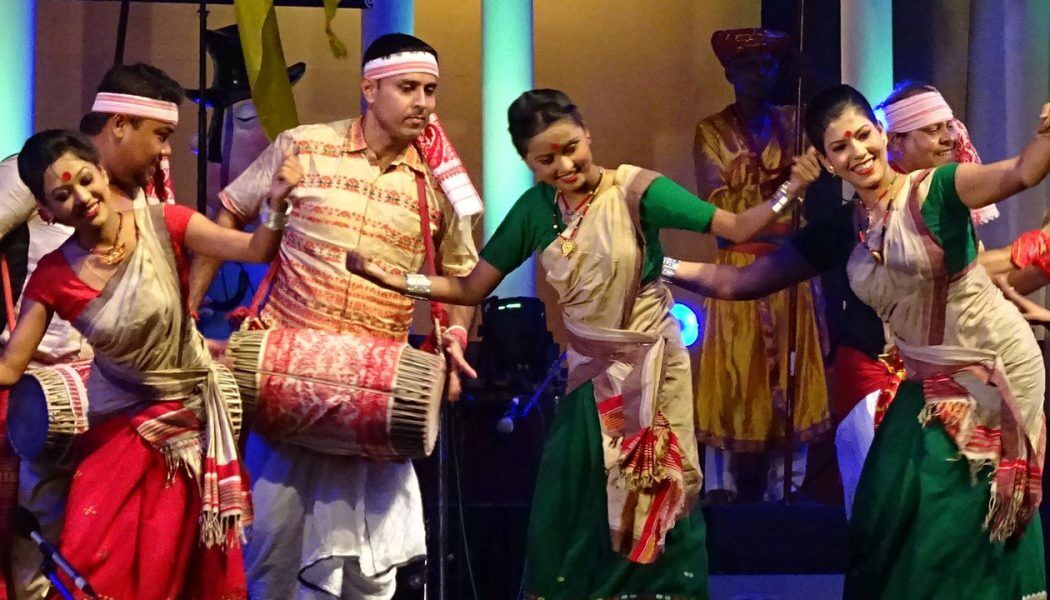Bihu Dance is an indigenous Folk Dance form originated in the state of Assam in India. Bihu consists of a set of three festivals important in Assam.
The three festivals are Rongali or Bohag Bihu, Kongali or Kati Bihu, Bhogali or Magh Bihu. Bhogali is observed in January, Rongali in April and Kongali in October. Rongali Bihu is the most important of these three.
Dance Form
Bihu Dance is performed in group by young men and women – brisk steps and rapid hand movements makes it special. The dancers wear a traditional colourful costume with a red colour theme. The red colour theme signifies the Joy and Vigour.
The Dance performance starts with male and female performers slowly walking into the stage. Male performers play musical instruments double headed drum or dhol, horn pipes and flute. Female performers place their hands above their hips with palm facing outward in the form of an inverted triangle. The women start moving in tune with the music swaying, bending slightly forward from the waist area. They gradually open up the shoulders placing their legs slightly apart. This is the main posture in the Bihu Dance.
As the intensity and tempo of the music goes up, the movement of the dancers also change according to the tune.
The Bihu Dance form is more dominant among the ethnic groups like Deoris, Sonowal Kacharis, Chutias, Boros, Misings, Rabas, Moran and Borahis.
